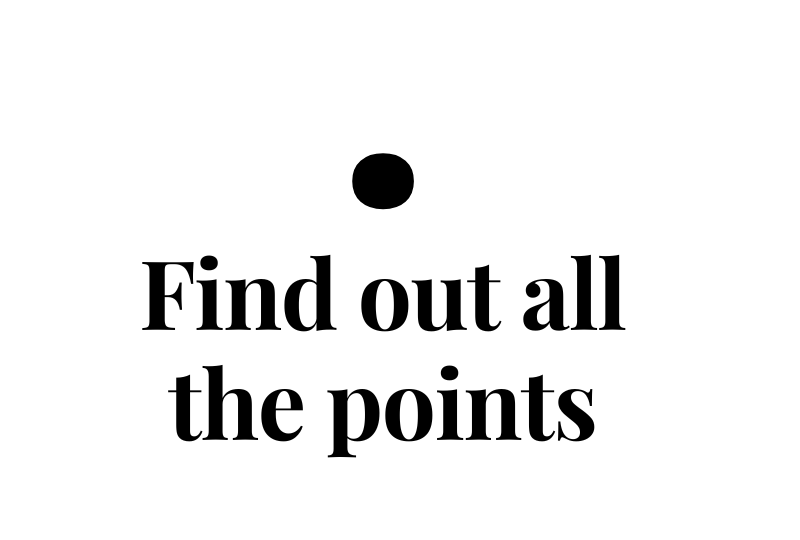FOR SALE
+92-300-1900991
FOR SALE
+92-300-1900991


The Full Stop, also called a period, is mainly used to complete the sentence. It is mainly used at the end of declarative sentences and imperative sentences. The period stops longer than with a comma and a semicolon. In addition, it marks the end of one thought and the beginning of the other.
An Oxford Students’ Dictionary definition of a period states that it is a punctuation mark “used at the end of a sentence to emphasize that there is nothing more to say on the topic. The whole point is what the word “point” means in the Merriam-Webster dictionary. represents the end of a phrase or acronym.
The Cambridge Dictionary defines a dot as “the symbol. is used in writing at the end of a sentence or at the end of the short form of a word,” and Collins’ dictionary defines a period as a Something you use at the conclusion of the phrase, unless it’s a question or an exclamation, is known as a “punctuation mark.”
Dots are used to finish a sentence. They show that a point of view has been expressed and that we are now ready to move on to the next proposal.
Like other punctuation marks, they show us how to read sentences – they show us when a sentence ends. Imagine you’re reading a book that doesn’t get full marks – it’s just a very, very, very long sentence!
Without a period, it would be difficult to determine where one sentence ends and another begins. Ideas can end up getting mixed up and blurring the message. This makes it much harder to read. That’s why we make it easy for the reader and use points.
We need to use dots in our writing to show the reader where the sentence ends. As a rule, the end point should come as soon as the full idea is expressed. So that we can go to the next concept.

Full Stop are one of the first punctuation marks children learn. They appear for the first time in the national program for the 1st year; However, many children already have some experience with points when they reach KS1.
Before points were officially introduced, some EJF teachers may have already started teaching children how to use finger spacing and recognize the end of a sentence.
There are many ways to teach children to use full scores. One way is to encourage them to read simple sentences aloud and perform a basic action (such as a hash puff) when they think they have reached the end of the sentence. The term “kung fu punctuation” can be used to describe this.
By the end of KS1, children working to the expected standard should be able to distinguish most sentences in their writing with capital letters and periods. If your class needs additional full-scoring support, why not check out some of our fantastic resources below?
Introduced by the Greek grammarian Aristophanes of Byzantium in addition to the comma and colon, the full period was originally created to help the reader better interpret and read aloud a text. While the first signs created by Aristophanes were a series of dots placed at different heights to inform the reader of the depth and length of a breath while reading, today’s descending punctuation marks are informed more by grammatical rules than just how and when to pause — the full point being one of the most important.
Now that you understand where the full point comes from and how it is most commonly used, if you want to incorporate this punctuation mark into your own writing as effectively as possible, it is important to know its many functions and use it with confidence.
The following seven roles of full stops are examined in much greater detail in Chapter 2, even though they are only briefly introduced and shown here:
After going through the very fundamentals of full stops, move on to Chapters 2 and 3 to understand more about the purposes and regulations of this punctuation mark.
Why Full Stops (Periods) Are Important
Even though it’s only a tiny dot, the period can be a true grammar tyrant. Here are six compelling arguments for giving periods more thought.
(Reason 1) Always end sentences with a period. Don’t start a new sentence with a comma.
The run-on sentence is the error that proofreaders fix the most frequently, and it is caused by the period. Usually, writing a sentence, inserting an improper comma, and then writing another sentence results in a run-on sentence.
Your idea probably consists of a few sentences. Once you’ve met the criteria for a sentence, you’ll need to finish it properly (usually with a period, a question mark, or an exclamation mark), even if you’re not done yet. It’s okay to state your point of view in a few sentences. (Remember that the sentence is grammatically complete, expresses a complete thought, and contains a subject and a verb (even if there is an implicit one). In the following examples, all commas must be periods.
(Reason 2) End a declarative statement that includes an indirect question with a period, not a question mark.A declarative sentence can contain an indirect question. Resist the temptation to use a question mark. These two examples must end with periods.
She asked if it was true.
I wonder if a soldier closes a bullet hole in his jacket? (Pioneer nurse Clara Barton)
Learn more about indirect issues.
(Reason 3) Be sure to use menstruation with labor, not to use.
Writers often don’t know whether to write “Mr. Smith” or “Mr. Smith,” “Dr. Jones,” or A “Dr. Jones.” There is nothing to consider if you adhere to American custom. Always put a dot (e.g. “Mr. Smith”, “Dr. Jones”, “Professor Munro”).
For the British, this is not so easy. If the last letter of the abbreviation (for example, “sir”) is the same as the last letter of the entire word (for example, “sir”), do not use a periodUse one if the final letters are different.
(The last letters are the same.)
Prof. > Prof.
(The last letters are different.)
(The last letters of paragraphs and paragraphs are identical, but the last letters of a paragraph and paragraph are not.)
No one will hang you for using the American procedure if you follow British custom. Many Britons do just that. However, knowledge of the British standard reassures the British. This excludes speculation. You should be aware that “Rev. Bloggs” requires a comma, whereas “Revd. Blogging” does not require one. (In the United Kingdom, “Rev.” and “Revd” are also accepted abbreviations for “Rever.”)
Here are some tips on how to properly use points when writing:
An informative or declarative sentence constitutes an assertion. To indicate a conclusion, always use a period after such statements.
Use a period to avoid missing letters when using abbreviations or to abbreviate terms (for example, United States).
Avoid using periods in abbreviations (e.g., “don’t” and “don’t”) where the last letter of the word and the abbreviation are identical.
A complete period must be used for each bulleted item, and each period must begin with a capital letter. However, points are not needed if the bullet points are simple words or short sentences.
Make sure that all bullets in the list use the same type of punctuation. Readers may be confused if periods, commas, and semicolons are used in the same list.
The periods must be used outside the closing quotation mark in British English, but they must be inside in American English.
Use a period to separate the whole number from the decimal value when writing numbers to decimals (for example, 3.14).
The use of both periods and these other punctuation marks is unnecessary and inappropriate.(Full Stop)
Using a comma instead of a period between two complete sentences is a common mistake. The result is a sentence that may be incomprehensible to the reader. If you want to separate independent sentences, use a period.
While the excessive use of exclamation marks can make your writing look unprofessional, they can also add accents or excitement. In most cases, use periods instead of exclamation marks and use them only for heartfelt speech.
You can make your text clear, concise, and easy to read by adhering to these comprehensive usage guidelines. Good grammatical punctuation not only improves readability, but also shows that you have thought about your writing.
What are the different grammar applications for this period?
A period, commonly referred to as a period, is used in grammar to indicate the completion of a sentence. Declarative, imperative, and indirect interrogative sentences end up using it. It is also used in initials, numbers, and abbreviations.(Full Stop)
How do you pronounce a dot punctuation mark?
Dots are pronounced “peer-ee-uhd” in American English and “peer-iod” in British English.
What other words could you use as punctuation marks instead of a full period?
Complete scores can also be referred to as written scores, scores, scores, and judgments.
What does the colloquial word “dot” mean?
“Period” is a colloquial word that emphasizes the end of a sentence or indicates that the topic has been fully covered.(Full Stop)